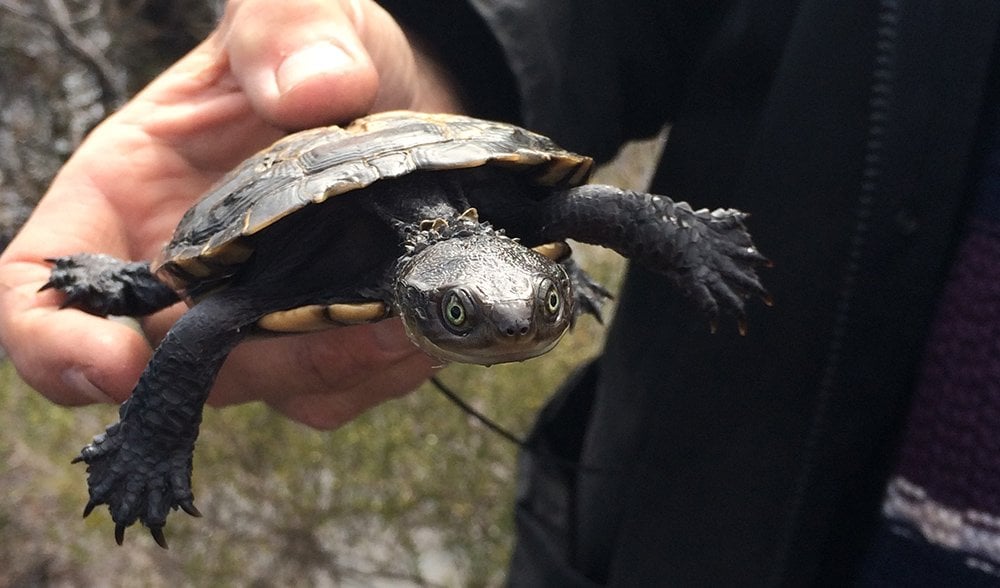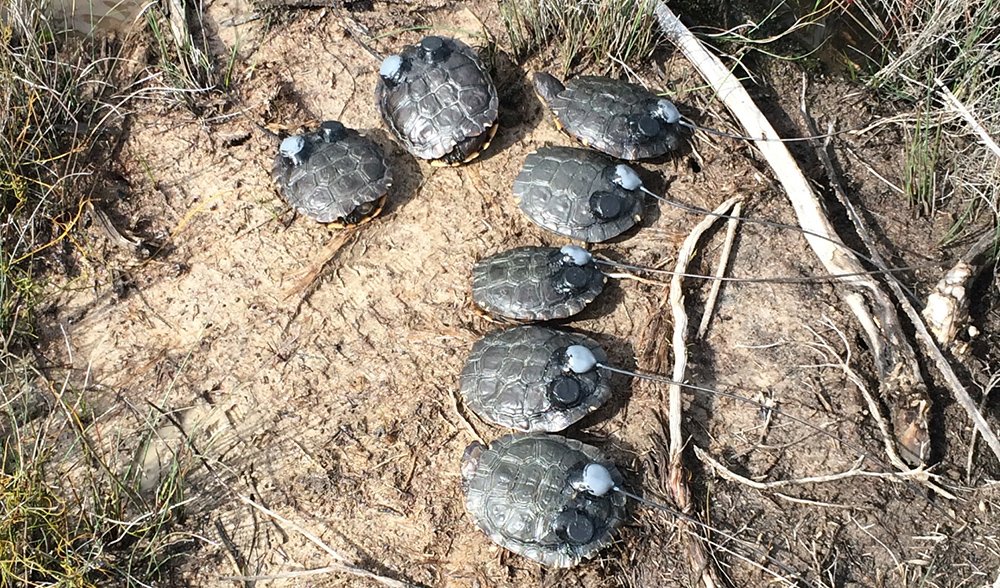Australian first to save our rarest reptile

IN AN AUSTRALIAN first, 24 critically endangered western swamp tortoises (Pseudemydura umbrina) have been released outside their historic range in a bid to save the species from extinction.
While historically found along the Swan Coastal Plain, the reptiles are now settling into new homes in the state’s south west.
After years of research and planning, the tortoises were fitted with radio transmitters and transported from Perth Zoo to Meerup (D’entrecasteaux National Park) and an area east of Augusta – each about 350km south of Perth – where 12 were released at each site.
The move comes after research suggested the two ephemeral (temporary) muddy wetlands in the Swan Valley to which the species is restricted – about 15km east of Perth – could become unsuitable by 2050.
“Current climate change predictions suggest that the fragmented habitat in their natural range will successively become hotter and dryer, with shortened swamp life increasingly impacting on the viability of western swamp tortoise populations,” explained Gerald Kuchling, a senior research scientist for the WA Department of Parks and Wildlife (DPAW).

The western swamp tortoise is Australia’s most endangered reptile. (Image: DPAW)
It is the latest step in the Western Swamp Tortoise Recovery Program – a joint effort between DPAW, the University of Western Australia, Friends of the Western Swamp Tortoise, Perth Zoo and the National Environmental Science Programme’s Threatened Species Recovery Hub.
“We believe that if climate change proceeds at the current rate, there is no option but to translocate the western swamp tortoise,” said Jan Bant, Chair of the Friends of the Western Swamp Tortoise.
“Trials need to take place over the next few years to ascertain if this is a viable option.”
“If climate change slows, the western swamp tortoise will be safe in their current homes for a longer period – but we really can’t take the risk of being caught short.”
Ensuring species’ survival
Gerald said the translocation sites were less fragmented and experienced a wetter, cooler climate than the swan coastal plain, and this months’ cool weather would help them settle in.
“Over the last 22 years all translocations took place in winter (July/August) so that the tortoises first experience a spring feeding and growing season to give them time to adapt to the new environment during the peak of their annual activity season,” he explained.

The tortoises were fitted with radio transmitters. (Image: DPAW)
Over the next 12 months, the tortoises’ growth rates and diet will be monitored every two weeks by staff and students from UWA and compared with data from a third translocated colony north of Perth in the Moore River Nature Reserve.
Sharing the area with its southern relative – the long-neck tortoise (Chelodina colliei) – the translocation sites’ macro-invertebrate communities will also be monitored throughout the trial.
If it proves a success and the southern sites are deemed suitable habitats, Gerald said the plan is to propose additional translocations to save the rare reptile.
“Due to large-scale wetland loss in the swan coastal plain over the last 200 years it is unlikely that western swamp tortoises will be able to colonise more suitable habitat in the future on their own,” Gerald said.
“This project aims to assist them in this endeavour to ensure survival of the species in the long term.”
READ MORE:
- 1.5 degree global warming target likely to be surpassed
- 2016 likely to be the world’s hottest year on record
- Australian endangered species list




